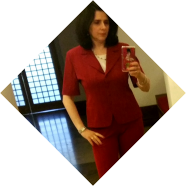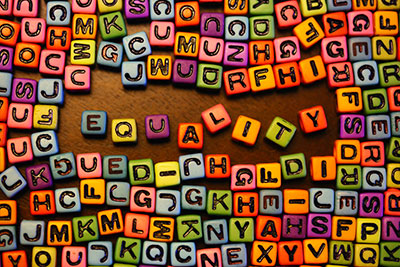Position of gender equality in EU policy
Where is position of gender policy in European Union is one of the crucial question. It is in European Commission in DG for Justice named JUST, which refers to importance of this politics for EU. It can be visible on the way of formula:
EU -> EC -> DGs -> DG Justice -> Directorate D -> D.1. Equality legislation & D.2- Gender Equality
EU gender equality acquis refers to all the relevant Treaty provisions, legislation and the case law of the Court of Justice of the European Union, CJEU in relation to gender equality.
In the field of gender equality there are a number of directives.The crucial Treaty Article for GE is Art. 157 TFEU establishing the principle of equal pay for women and men which covers Directive 2006/54, on the implementation of the principle of equal opportunities and equal treatment of men and women in matters of employment and occupation.The Treaty of Amsterdam became one of the essential tasks of equality between men and women throughout the EC; introduced the obligation of gender mainstreaming so that both the EC and MS became obliged to actively take into account the objective of equality between men and women when formulating and implementing laws, regulations, administrative provisions, policies and activities.The Lisbon Treaty, Article 19 TFEU provides a legal basis to take appropriate action to combat discrimination based on sex, racial or ethnic origin, religion or belief, disability, age or sexual orientation; also inserts a reference to the Charter of Fundamental Rights of the European Union into Article 6 of the Treaty on European Union (TEU), making this charter legally binding. (See at Eur-Lex)
In the EU law gender equality is positioned across: 7 directives, 7 communications, 1 recommendation (from March 2014), 26 Council conclusions and 10 reports.
From section of Communication few are most applicable:
- The European Pact (1st) for Gender Equality (European Council, 2006.)
- EC Strategy for equality between women and men 2010-2015 (COM (2010) 491final) follows on from the EC’s Roadmap for equality between women and men 2006- 2010, which was the subject of a mid-term review, and the Women’s Charter (EC, 5th March 2010.)
- EC Strategy for equality between women and men 2015. With special Eurobarometer 428. Report on GE
- the European Pact for Gender Equality 2011-2020 in the light of the Commission’s new Strategy for equality between women and men 2010-2015, of the Europe 2020 Strategy (European Council, 2010.)
Except DG JUST in EU are other institution related to the policy. The Advisory Committee on Equal Opportunities for Women and Men is body, assisting the EC in the formulation and implementation of activities aimed at promoting gender equality. The Committee is composed of representatives from ministries and equality bodies in the MS, amongst others, and includes two observers from the European Women´s Lobby (an umbrella organization of women’s associations in the EU). The European Network of Legal Experts in the Field of Gender Equality assisting the EC, too which ensures that the Commission is regularly informed of important legal developments in the field of gender equality in the Member States. An autonomous EU body, The European Institute for Gender Equality (EIGE) established to contribute to and strengthen the promotion of gender equality, including gender mainstreaming in all EU policies and the resulting national policies, and the fight against discrimination based on sex, as well as to raise EU citizens’ awareness of gender equality.
For understanding topic, here are few conclusions from last Forum on GE, 20th April 2015. Brussels, DG.JUST:
- Nearly 60% of EU university graduates in EU are women. However, the percentage of women in employment in 2014 (63.5 %) is still 11.5 percentage points below the rate for men and below the Europe 2020 target (both 75 %). More EU families depend on women’s work, a majority of women with children (61 %) are also breadwinners or co-breadwinners.
- The gender pension gap reached 39%. About 50 % of single parents, mainly mothers, were at risk of poverty or social exclusion in 2013, i.e. double the risk for the population as a whole. · 36 % of foreign-born women in the EU (versus 16% of native women) and 33 % of foreign-born men were at risk of poverty or social exclusion in 2013. Furthermore, a growing proportion of asylum seekers in the EU are women (34 % in 2013, as compared with 28 % in 2008).
- The Commission supports the development of reconciliation policies in several ways, according to its competences and using all instruments at its disposal: EU legislation provides individual rights and supports women’s participation in the labour market and work-(family) life-balance for women and men; · Country Specific Recommendations are made in the framework of the Europe 2020 Strategy to Member States lagging behind; · Funding, in particular the Structural Funds, and the Rights, Equality and Citizenship Programme, to support childcare infrastructure and projects; · Monitoring of Member States’ performances in the field of childcare facilities towards the Barcelona targets ; · Building of knowledge on reconciliation issues, through the improvement of data collection and specific studies , and; · The organizations of awareness raising events and exchanges of good practices between Member States on reconciliation policies.
- During the period 2010-2015, the Commission has promoted good practices on gender roles in the labour market and in education: National awareness-raising activities challenging stereotypes on the labour market and trying to overcome occupational segregation were supported through the European Social Fund and European campaigns were launched on some specific issues, such as the participation of women in the digital economy. · The Erasmus+ Programme and its predecessor, the 2007-13 Lifelong Learning Programme, have supported a number of projects aiming at revealing and overcoming stereotypes in education and training, as well as in sport. · Mutual learning seminars on gender equality in education were organised . · The European social partners – ETUC, BUSINESSEUROPE, UEAPME and CEEP – collected good practices for gender equality, including on gender roles, in a toolkit. In the second half of 2015, the Commission will launch a call for proposals to support transnational projects to promote good practices on gender roles and to overcome gender stereotypes in education, training and in the workplace.
- Enabling women to enter ICT jobs will provide a boost to the EU economy. Less than 30% of the around 7 million people working in the information and communication (ICT) sector are women. They are under-represented at all levels, especially in decision-making positions.
- Men still largely outnumber women in decision-making positions, particularly at the highest levels. The proportion of women in national governments 1 across the EU (senior ministers ) has risen by 7 percentage points (pp) over the past decade, from 21% (end 2004) to 28% in February 2015. The average rate of change over the period is just 0.7 pp/year and if progress continues at this pace it will take until 2033 to achieve at least 40% of each gender in national governments and until 2047 to achieve parity (50%). The proportion of women in the single/lower houses of national parliaments across the EU has risen from around 22% in 2004 to 28% in early 2015, an increase of just less than 6 pp or an average of 0.6 pp/year. However, the pace of change varies between Member States, meaning it would take until 2036 to reach the 40% threshold and until 2054 to reach parity. On average across the EU women tend to be better represented in regional level assemblies (32%) and in regional executives (35%). In October 2014, on average, only 20.2% of board members of the largest publicly listed companies3 registered in the EU were women. From 2003 to 2010 the share of women on boards rose from 8.5% to 11.9%, an increase of 3.4 pp or an average of 0.5 pp/year. Since October 2010, the share has risen 8.3 pp in four years, an average of 2.1 pp/year, four times the previous rate of change. Noting the slow rate of change, the European Commission decided to put forward the proposal for a Directive that aims to accelerate progress to improve gender balance on corporate boards.
- The Commission aims at setting principles, objectives, priorities, and actions that are broadly shared by Member States, the European Parliament, social partner organizations, civil society, and other stakeholders. Only in that way the Commission’s future policy commitment will provide a blueprint for all stakeholders to promote a gender equal European Union. The European Institute for Gender Equality plays an important role in providing expertise, improving knowledge and heightening visibility of gender equality. The Structural and Investment Funds, funding programmes in different policy areas, and in particular the Rights Equality and Citizenship programme need to support the smooth implementation of the Commission’s future policy commitment on gender equality. The implementation of gender equality methodologies such as gender impact assessment and gender budgeting (the implementation of a gender perspective in budgetary process) are key to promote gender equality and provide for greater transparency and enhance accountability, as central elements to effective governance. In that respect a monitoring mechanism remains necessary in order to follow-up the realization of commitments in practice and to monitor progress. This also implies the development of EU gender statistics and indicators, as well as data disaggregated by sex.
Statistic analyses for EU 28, last made by Eurometer 428, March 2015. is available at: http://ec.europa.eu/public_opinion/archives/ebs/ebs_428_sum_en.pdf


Odgovori